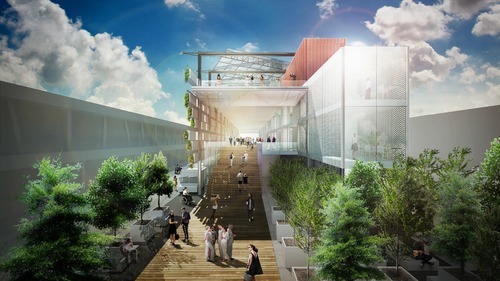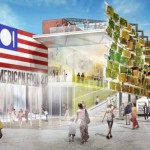The Theme of the Next World’s Fair is Food – Milan 2015
– – – – –
“We need a white knight, and we think that person is you.”
Nearly two years ago, Dorothy Cann Hamilton was sitting in her corner office at the International Culinary Center in Soho, the cooking school formerly known as the French Culinary Institute, which she founded 30 years ago. The voice on the other end of the line was a representative from the Italian government, speaking in a tone somewhere between persuasive and desperate.
Unbeknownst to Hamilton, a clock was ticking on a yet-to-be-conceived, past-deadline USA Pavilion to represent America at the 2015 Expo Milan, a historically rich global institution formerly known as the World’s Fair. The theme, which changes with each event, was to revolve around food and energy. And Hamilton, one of America’s foremost thought leaders in the culinary world, was being asked by the hosts to court the office of the Secretary of State to get behind what would become a multisensory exhibit the size of two Manhattan blocks. “I said yes, I would do it, but I would need somebody with the best Rolodex in America.”
That person was Mitchell Davis, executive vice president of the James Beard Foundation, journalist and, as Hamilton explains over coffee, the “creative vision” behind what she describes in detail as something similar to a living organism, requiring the teamwork of hundreds of architects, food-service professionals, academics and chefs. They all came together — via conference call and during quick trips to Milan — to create an interactive exhibition that articulates a central vision: American Food 2.0.
Who cares about the World’s Fair? It was a question recently posed to me when news started trickling out about Hamilton and the USA Pavilion, which is set to debut on May 1 in the northern Italian city and run through October 31, attracting an estimated 20 million visitors. Over 145 countries will participate at festival grounds located 10 miles northwest of Milan and accessible via high-speed rail.

Since the first World’s Fair, called the Great Exhibition and held in London in 1851, Fairs (later called Expos) were largely intended to bring leaders in science, commerce and technology together in one user-friendly and convivial space. In the days before radio, television and the Internet, these exhibitions were incredibly popular, and critical for so-called captains of industry looking to exhibit, and sell, their latest technology. And for anybody who has paid the price of admission to a baseball-card convention, comic con or boat show, attending a convention of this scale can be a pretty fun way to kill an afternoon. In the 19th and 20th centuries, attendance ballooned.

